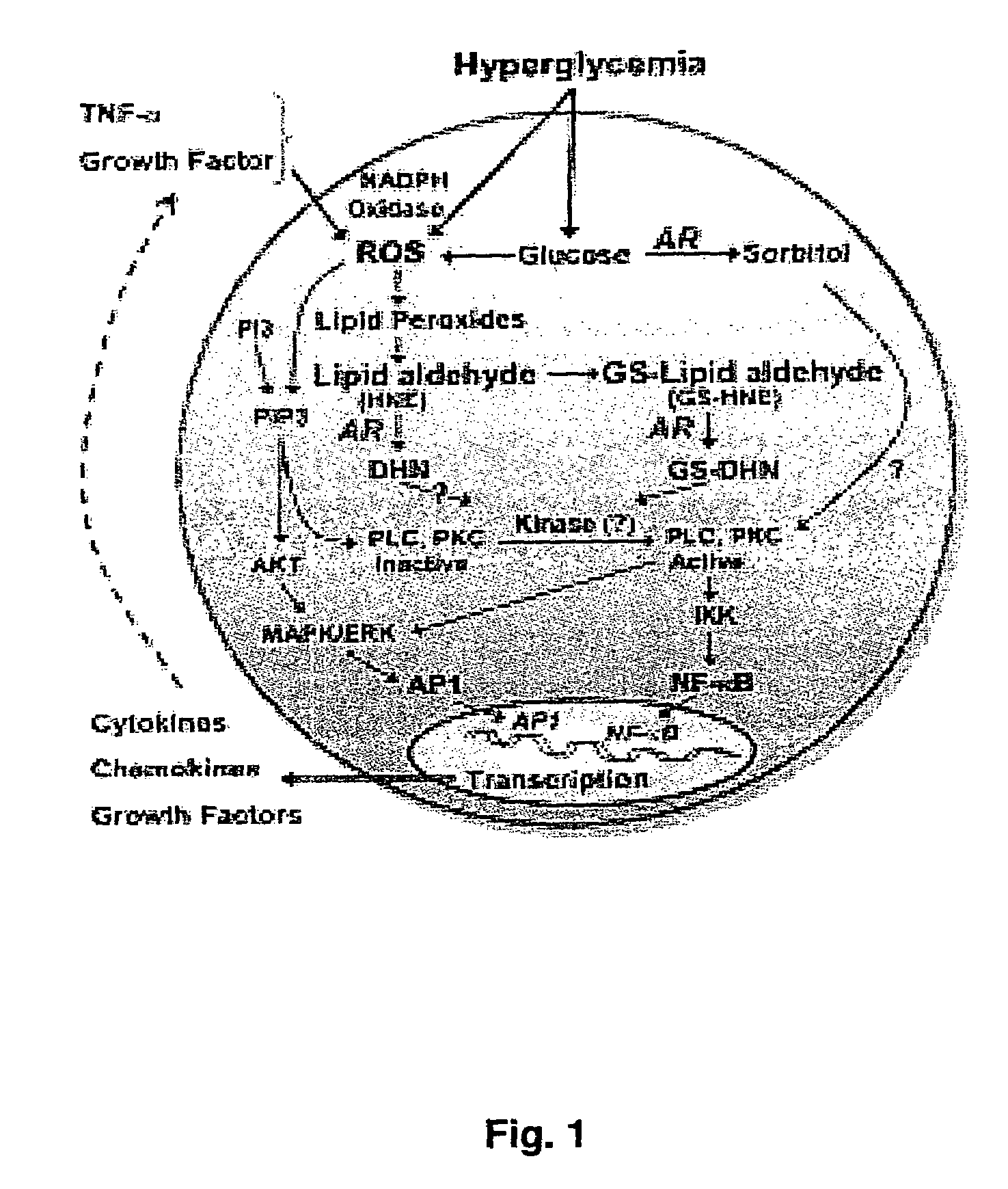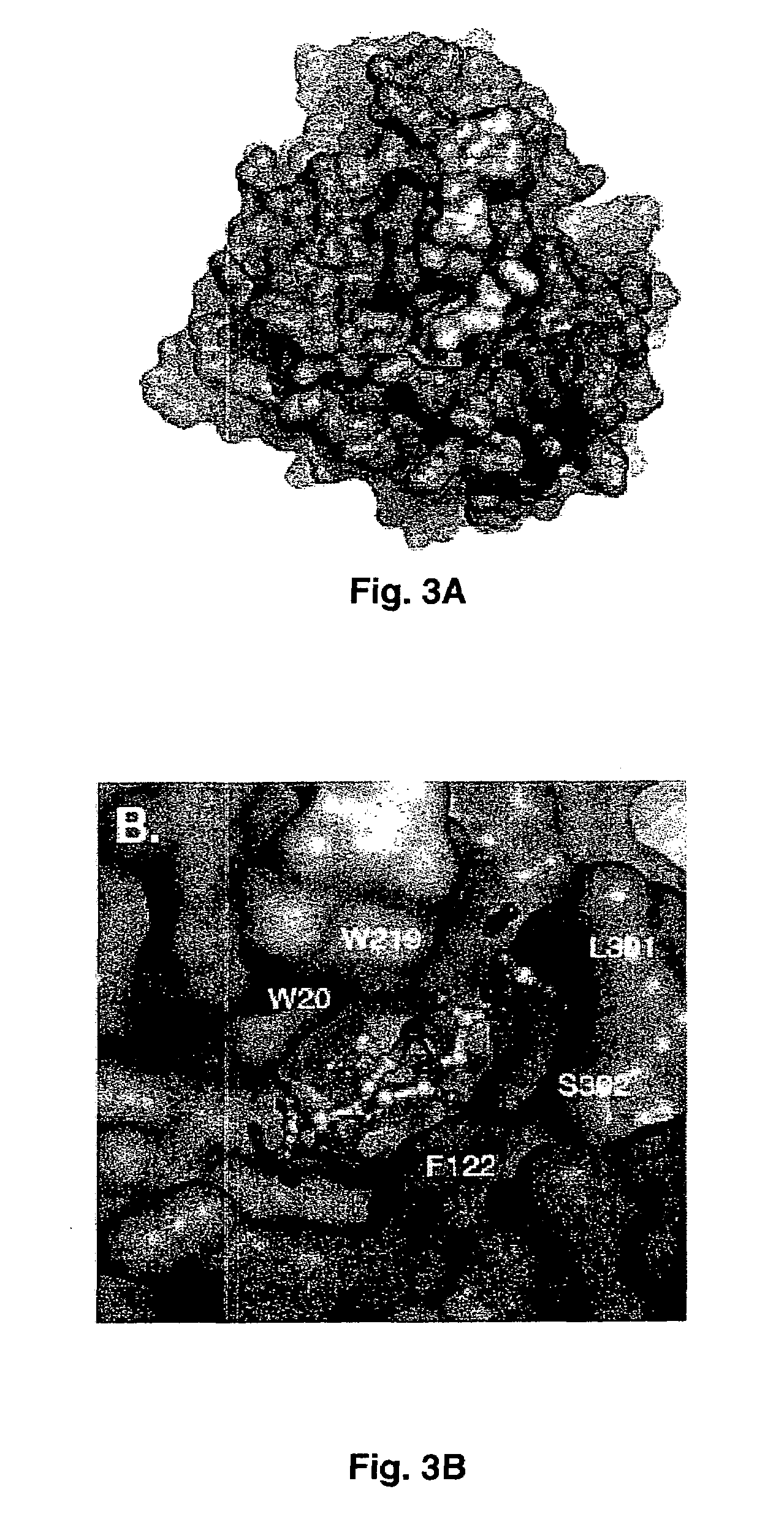Method for designing a potential inhibitor of glutathione-aldehyde conjugate binding to aldose reductase
a technology of aldose reductase and glutathione aldehyde, which is applied in the field of potential inhibitors of glutathione aldehyde conjugate binding to aldose reductase, can solve the problems of deficiency of aldose reductase in the early ar
- Summary
- Abstract
- Description
- Claims
- Application Information
AI Technical Summary
Benefits of technology
Problems solved by technology
Method used
Image
Examples
example 1
Overexpression and Purification of Recombinant Human AR
[0050]Recombinant human AR (SEQ ID NO: 1) was overexpressed and purified as described earlier (23). In brief, the cell extract was subjected to chromatofocusing on PBE94 (Pharmacia LKB Biotechnology Inc.) followed by hydroxylapatite column chromatography and reactive blue affinity chromatography as the final step. All purification buffers contained 1 mM dithiothretiol (DTT).
example 2
Crystallization of the Ternary Complex
[0051]Purified AR was concentrated by ultrafiltration (Amicon YM-10 membrane) to ˜10 mg / ml. Prior to crystallization, 10 mg / ml AR in phosphate buffer (10 mM phosphate pH 7.1, 0.5 mM EDTA, 10 mM DTT) was incubated with NADPH and DCEG (γ-glutamyl-S-(1,2-dicarboxyethyl)glutathione) at a AR:NADPH:DCEG molar ratio of 1:2:2 for 10 min at 4° C. The ternary complex was crystallized using the vapor diffusion method at 4° C. The protein:ligand solution was mixed with an equal volume of 22% (w / v) polyethylene glycol (PEG) 4000 in 100 mM sodium citrate (pH 5.0) and 6 ml of droplets were placed above an identical well solution.
example 3
Data Collection
[0052]X-ray data were collected using a MacScience DIP 2030H area detector and a M06XHF rotating anode X-ray generator operating at 50 KV and 90 Ma and equipped with Göbel collimating optics (Bruker AXS). The first crystal, 0.1×0.1×0.1 mm3, was flash-cooled, without the addition of cryo-protectants to the drop, using nitrogen boil-off (Cryo Industries). Weak ice rings were observed in the diffraction pattern. The protein crystallized in the P21 monoclinic space group with cell dimensions a=47.21 Å, b=66.72 Å, c=49.30 Å, a=g=90.00°, b=92.24°. This crystal form was not observed previously for any AR crystal structures. Based upon the Matthews coefficient (24), there was predicted to be one AR molecule per au. The data were processed to 2.6 Å resolution using the programs HKL (25).
[0053]A second crystal was soaked in mother liquor containing 20% glycerol (v / v) and 25 mM of DCEG and flash cooled. Diffraction data collected from crystal 2 were processed with HKL to 1.94 Å ...
PUM
| Property | Measurement | Unit |
|---|---|---|
| pH | aaaaa | aaaaa |
| y angle | aaaaa | aaaaa |
| unit cell dimensions | aaaaa | aaaaa |
Abstract
Description
Claims
Application Information
 Login to View More
Login to View More - R&D
- Intellectual Property
- Life Sciences
- Materials
- Tech Scout
- Unparalleled Data Quality
- Higher Quality Content
- 60% Fewer Hallucinations
Browse by: Latest US Patents, China's latest patents, Technical Efficacy Thesaurus, Application Domain, Technology Topic, Popular Technical Reports.
© 2025 PatSnap. All rights reserved.Legal|Privacy policy|Modern Slavery Act Transparency Statement|Sitemap|About US| Contact US: help@patsnap.com



